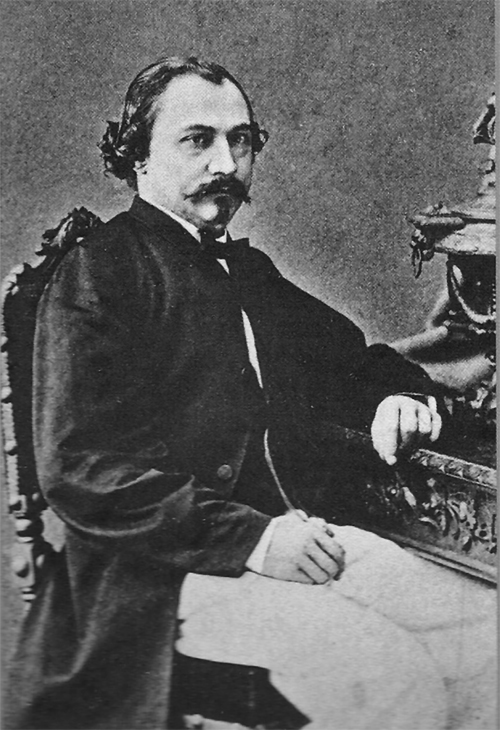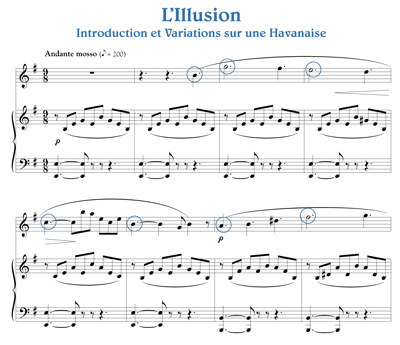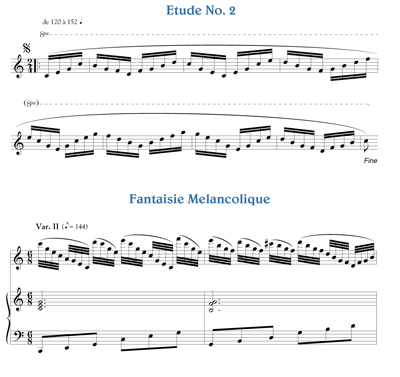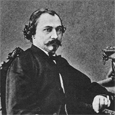
Mathieu-André Reichert is a name that inspires thoughts of pedagogical studies and technical exercises in the flute world. Although Reichert’s etudes found a permanent place in the flute curriculum, few facts are widely known about his life, and other works of his fell into obscurity. Reichert’s biography is not readily available in English, and few efforts have been made to chronicle his life and works.
Most of the available biographical information about Reichert is a result of the research of Odette Ernest Dias. Dias published articles in Portuguese and German as well as the book Mathieu-André Reichert: Um Flautista Belga na Corte do Rio de Janeiro. Reichert is listed in François-Joseph Fétis’ Biographie universelle des musiciens, and Richard Rockstro’s treatise contains a brief mention of Reichert in an entry about his teacher, Jules Demeur.
Reichert’s rich and vibrant life as a flute virtuoso of the nineteenth century led to the composition of many salon works as well as the publication of etudes. Although rarely performed, Reichert’s salon works for flute and piano are available in two volumes, published by Schott. Reichert’s etudes are well known to today’s flutists due to the efforts of Marcel Moyse, who wrote variations on the exercises in his book, How I Stayed in Shape. Moyse was one of the few flutists who promoted Reichert’s compositions. He often taught Reichert’s Fantaisie Melancolique, Op. 1, the theme of which is recorded on the CD, The Recorded Legacy of Moyse.
Born in Maastricht, The Netherlands in 1830, Reichert began his musical career by playing in cafes and bars with his father, who was a nomadic musician. Reichert attracted the attention of the flutist Jules Demeur, who brought him to study at the Brussels Conservatory in Belgium. The director of the Conservatory, François-Joseph Fétis, accepted Reichert as a student in 1844. Fétis later described Reichert as one the most skilled and extraordinary flute virtuosos of the nineteenth century in his publication Biographie universelle des musiciens.
Reichert’s alcoholism and penchant for self-indulgent behavior led Demeur and Fétis to acquire a military position for him in the Belgian Army. Once Reichert gained control over his vices, he was allowed to enter the Conservatory’s competition and won first prize in 1847. He was hired at the Belgium court of Leopold II and gave concerts across Europe and America with the orchestra of French conductor Louis-Antoine Jullien. Reichert performed as soloist and second flute to Robert Sidney Pratten.
While giving concerts in Paris in 1859, a group of musicians including Reichert were hired by Dom Pedro II of Brazil for the Imperial Court at the Palace at São Cristóvão. Pedro II (r. 1831-1889) led a progressive empire and instituted many reforms in an effort to modernize Brazil, including the establishment of the Conservatory of Rio de Janeiro in 1847. A strong patron of the arts and sciences, Pedro II often invited intellectuals and artists from Europe to his court. One of these musicians was the composer Carlos Gomes, whose success is attributed to the patronage of Pedro II.
In Brazil, Reichert performed at beneficiary concerts on behalf of the Brazilian court, toured northern and southern Brazil, and was principal flute of the Teatro Lyrico Fluminense. This was the leading opera house in Rio de Janeiro in the nineteenth century and saw the Brazilian premieres of many works by Carlos Gomes, including Joana de Flandres, for which Gomes wrote the flute part of the cavatina with Reichert’s performance style in mind. In the cavatina, the two flutes engage in a sprightly dialogue that displays technical virtuosity by making use of wide registral leaps, a trademark of Reichert’s music.
Reichert was given the freedom to travel on tour and give concerts in the major cities of Brazil. His impressions of northern Brazil inspired him to write the works Souvenir de Para and Souvenir de Bahia. Reichert’s performances sparked positive reviews and excitement from audiences. The Brazilian poet Tobias Barreto dedicated two poems to Reichert in his work Dias e Noites.
The most significant sources of concert promotion in nineteenth century Brazil were musical salons held in exclusive clubs for the Brazilian elite. Renowned local musicians performed alongside wealthy amateurs and repertoire included operatic excerpts and virtuoso instrumental works. Programs were lengthy and often lasted through the early hours of the morning.
The research of Odette Ernest Dias discovered a concert program from a performance that Reichert was involved in at the Fluminense Club. Patronized by the Baron de Moreira for the benefit of the Orphan Asylum of Santa Teresa and the Belgian Beneficent Society, the program included works for piano, violin, and voice in addition to flute. Reichert performed his own compositions as well as flute accompaniment to operatic excerpts. This concert program is shown below.
.jpg)
Reichert spent his last years at the charity Santa Casa da Misericórdia. He died of meningitis in 1880.
Reichert wrote many salon pieces for flute that display technical virtuosity and lyrical writing reminiscent of bel canto opera. One hallmark of Reichert’s compositional style is the use of rapid registral leaps that create the effect of two flutes playing at once. Reichert’s works express stylistic traits of transAtlantic genres that are usually associated with South America in collaboration with European forms. One genre he often used is the habanera. Reichert transformed the habanera theme into variation form in his work, L’Illusion, Introduction et Variations sur une Havanaise, Op. 7.
The habanera is a genre that is notoriously used to evoke a sense of exoticism. The common assumption in the Western world is that the habanera originated in South America and was adopted in Europe by nineteenth century Romantic composers fascinated by the exotic. Surprisingly, the habanera’s origins lie within the European contradance.
As the contradance migrated to South America and Spain, it took on the rhythmic pattern known as the “habanera rhythm,” and transformed into a Romantic vocal genre. When the genre returned to Europe, composers exploited the transformation as a stylistic characteristic of exoticism in salon music. Although European forms were retained, an Afro-Caribbean element lies within the treatment of rhythm, as shown in the habanera rhythm pattern below.
.jpg)
The habanera rhythm formed an ostinato in the accompaniment underneath a simple melody in four to eight bar phrases. Simple harmonic language was in accordance with eighteenth century European traditions. Most habaneras are written in a minor key with a modulation to the parallel major that persists until the end.
Reichert wrote a habanera for flute and piano as his Op. 7 while working at the court of Pedro II in Brazil. Reichert’s habanera has a descriptive title in line with the nineteenth century European Romantic tradition of character music. The programmatic title illustrates Reichert’s European roots as a composer and the work’s European form despite its South American elements.
Reichert utilizes the habanera rhythm and characteristics in conjunction with the European form of continuous variations written in a style that is technically virtuosic for the flute. The opening introduction displays a lyrical and dramatic character that recalls the tradition of Spanish lyric opera. This effect is achieved through the use of lyrical phrases interspersed with expressive appoggiaturas that enhance the melancholic flavor of the piece.
When performing this piece, it is important to be aware of the chord structure in order to bring out the appoggiaturas. As shown on the next page, the first phrase is simply a tonic prolongation of E Minor. If the main skeletal notes of the phrase are isolated, the melody would be as follows: B (m.2), G m.3), E (m.4), C (m.5), and B (m.6). The function of the iv6/4 chord in m.5 is to serve as an appoggiatura to the tonic harmony with the C in the melody resolving to the B in the next measure. In order to bring this to the forefront of the texture, it is logical for a performer to phrase to the appoggiatura in m.5. This also makes sense structurally because of the nature of the four-bar phrase and traditionally, a performer phrases to the third bar of a four-bar phrase.

The habanera rhythm first appears in the Thème of the work. The Thème begins with the piano accompaniment performing the habanera rhythm in a style that is reminiscent of Bizet’s notorious habanera for the opera Carmen. The Thème begins in the key of E minor, and follows the traditional habanera scheme of modulating to the parallel major by the end. The piano accompaniment plays the habanera rhythm underneath a melody line that is enriched with ornamentation of a triplet figure.
After a perfect authentic cadence in the key of E major, the first variation begins without pause. Although the Introduction and Thème are labeled, the variations are not identified with titles. At first glance, the variations may appear to be technical studies. However, the melody of the Thème becomes evident once the main notes are discovered in the line. Bringing these notes out creates interest and allows the audience to hear the melody. When preparing this piece, a performer should practice the two voices independently of each other. When they are put together, it creates a dual effect of hearing two voices played at once.
One aspect of Reichert’s habanera that remains ambiguous is the editing. There is no urtext edition and only one published edition by Schott, so it is difficult to know if the dynamic and tempo markings were written by the editor or by Reichert. The tempo marking for the Introduction is eighth note = 200. Since Maelzel’s metronome of the nineteenth-century only went as fast as 160, it is logical to assume that this tempo marking was an addition made by the editor.
Reichert wrote two etude books, Six Etudes, Op. 6, and Seven Daily Exercises, Op. 5. Reichert’s Seven Daily Exercises are the most widely known among flutists. The exercises develop technique and embouchure flexibility through the use of wide registral leaps. Each exercise modulates through all 24 major and minor keys. Virtuosic technical facility was a trademark of Reichert’s performance style. He practiced difficult technical exercises with the metronome in unusual keys for hours. Perhaps the etudes Reichert published are exercises he devised to maintain his own practice.
The virtuosic technical writing of Reichert’s etudes is mirrored in the bravura style of his salon works. Since Reichert’s technique was one of his strengths, it makes sense that he would have written compositions that showcase his talents in order to be successful as a virtuoso. For example, the writing of Etude No. 2 from Reichert’s Seven Daily Exercises is very similar to the writing of Reichert’s second variation in his piece Fantaisie Melancolique. Both works make use of a slurred arpeggio pattern that explores the different registers of the flute. However, in the etude the pattern ascends, while in the Fantaisie, the pattern descends.

With the advent of the public concert during the Romantic period, changes were made in instrumental construction and compositional style in order to accommodate performance venues with large concert halls and audiences. In order to compete in this setting, virtuoso flutists wrote and performed pieces that advocated the strengths of the flute. Flutists performed variations and fantasies that emphasized wide leaps and the effect of several voices playing at once. Despite their idiomatic writing, these pieces did not survive as classics in the flute repertoire and were often dismissed as lighthearted and trivial. In an article the early twentieth century, flutist Louis Fleury wrote:
An instrument of the front rank in the XVIIth and XVIIIth centuries went quite out of fashion and was neglected by the composers of the XIXth. The flautists themselves are to blame. It would be true to say that the great virtuosos of the last century – men like Berbiguier, Tulou, Demersseman, Nicholson and Drouet – did more harm to their instrument, in spite of their undoubted mastery of it, than the clumsiest amateur could ever have done.
Although the etudes of nineteenth century virtuoso flutists are widely used as pedagogical instruction methods, the salon works of these flutists are relatively unknown. As flutists became interested in the orchestral world and modern composers of the twentieth century, salon works of the nineteenth century fell into oblivion. Despite the fact that these pieces were dismissed as inconsequential and frivolous, they provide valuable insight as to how the flute became a great soloistic instrument.
Bibliography:
Barulich, Frances, and Jan Fairley. “Habanera.” Grove Music Online. Oxford Music Online. Oxford University Press, accessed 2/11/04. http://www.oxfordmusiconline.com.turing.library.northwestern.edu/subscriber/article/grove/music/12116.
Béhague, Gerard. Music in Latin America: An Introduction. Englewood, Cliffs, NJ: Prentice-Hall, Inc., 1979.
Burkholder, J. Peter, Donald J. Grout, and Claude V. Palisca. A History of Western Music. 7th ed. New York: W.W. Norton & Company, 2006.
Dias, Odette Ernest. Mathieu-André Reichert: Um Flautista Belga na Corte do Rio de Janeiro. Brazil: Editora Universidade de Brasilia, 1990.
Fétis, François-Joseph. Biographie universelle des musiciens et bibliographie génèrale de la Musique. 2nd ed. Paris: Firmin-Didot, 1866.
Fleury, Louis. “The Flute and its Powers of Expression.” Music and Letters 3, no. 4 (1922).
Maelzel, John. “Patent for an Instrument or Machine.” In The Repertory of Arts, Manufactures, And Agriculture: Consisting of Original Communications, Specifications of Patent Inventions, Practical, and Interesting Paper. London: Nichols, Son, and Bentley Printers, 1818.
Reichert, Mathieu-André Fantaisie Melancolique, Op. 1. Edited by Nikolaus Delius. Mainz, Germany: Schott, 2001.
Reichert, Mathieu-André. L’Illusion, Introduction et Variations sur une Havanaise, Op. 7. Edited by Nikolaus Delius. Mainz, Germany: Schott, 2001.
Reichert, Mathieu-André. Seven Daily Exercises, Op. 5. Mainz, Germany: Schott, 1872.
Rockstro, Richard Shepherd. A Treatise on the Flute. London: Musica Rara, 1928.






